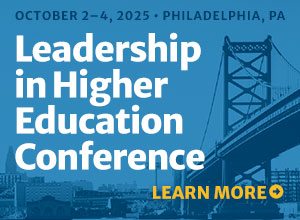The Department Chair as the Engine of Diversity Transformation
The academic department chair is positioned to be the engine of change in diversity progress in higher education today. Serving at the core of the academic enterprise, chairs work collaboratively with faculty to empower students with the needed skills, knowledge, and competencies to participate as leaders and citizens in a...
Take a Vacation—Please!
Although workshops on academic leadership frequently devote sessions to the topic of “work-life balance,” that phrase is really misleading. It seems to imply that we’re either working or living but never doing both at the same time. However, this is a false dichotomy for most administrators. We’re obviously living while...
When the End Is in Sight
There comes a time in the life of an academic program when it is no longer viable due to dropping enrollments, lack of faculty resources, budget cuts, changing external contexts, or other factors. When the decision is made to close a program, the department chair’s attention to planning will be...
Why Getting It Done Is Often Better Than Getting It Perfect
Although the remark has been attributed to lots of different people, it was Voltaire who first observed (in his Dictionnaire Philosophique, 1764) that “the perfect is the enemy of the good” (Le mieux est l’ennemi du bien). It has become such a common saying that we recite it almost without thinking....
Considerations for Meaningful and Credible Strategic Planning
Formulating strategic plans is a relatively common activity in higher education. Some institutions have strong traditions in this regard, and all levels periodically engage in this process. Others participate occasionally. Much depends on the interest and motivation of the upper administration. In fact, planning of this type is often initiated...
Can Innovation Be Taught?
As budgets tighten at colleges and universities, academic leaders are repeatedly urged to be more entrepreneurial in their approaches. “It’s time to think outside the box,” we’re told. “Be creative. Be daring. Be innovative.” But what do you do if you’re not a naturally innovative person? Or how can you...
Seven Strategies for Embracing the Emotional Labor of Teaching
While attending a student success workshop a few years ago and gaining strategies to connect with students, I thought, “What about how hard I work just to be friendly and kind?” Although the workshop was beneficial, it seemed like a foundational portion of my labor was invisible. What about the...
Myths and Beliefs That Limit Effectiveness of Higher Education
In an era promoting the science of learning, it is difficult to accept the continuation of myths and beliefs that undermine both student learning and academic institutions’ effective performance. Nevertheless, it is part of the human condition that groups and organizations, as well as societies, create myths that support a...
Being Intentionally Collaborative: Making the First Move
In a recent job interview for an associate vice president position, a prospective candidate was asked if they had any questions for the search committee. The person asked, “Is this a collaborative environment?” After a pregnant pause that seemed to give birth to triplets, the general response was that the...
When Faculty Overreact to Course Ratings
So far in this series on end-of-course ratings we have discussed how to frame a conversation with a faculty member who receives average ratings semester after semester and how to have a productive conversation with faculty who receives low evaluations. The final end-of-course ratings conversation that merits consideration is the exchange that...












